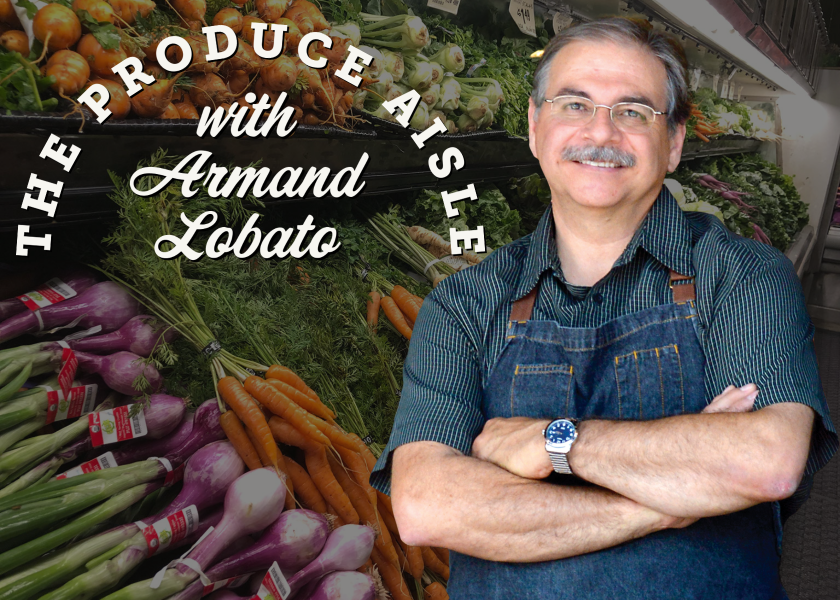Find your real potential within the gross profit list

Potential is an inspiring, thoughtful word when it comes to business.
You’ve heard the clichés: Unlock your potential. Realize your potential. Reaching your potential. I even overheard my third grade teacher, Mary Beth McSlurp, say to my parents, “Your son stares out the window a lot. But he has potential.”
What can I say? I’d rather be outdoors. In any case, when it comes to the day-to-day happenings in the produce aisle, potential is especially important.
Take the periodic list that every chain posts, summarizing how the produce department performed regarding — among other results — gross profit, or margin. In the simplest terminology, gross profit is the difference between a produce department’s sales minus the cost of goods. It’s typically listed as both the gross profit amount in dollars and as a percentage.
The percentage is what everyone is laser-focused upon. Especially store managers, who would prefer that their store finish as one of the top 10 performers or at the very least above the median or middle value of the list. Every store and produce manager wants to be able to say, “I may not be among the (gross profit) leaders, but I’m above average.”
Take any similar list of sorted results. You’re always going to have one half above average and the other half below. That’s how numbers work. In produce departments, above average is considered safe territory, while below average is — well, for many grocery chains, this is the pass or fail standard.
However, things aren’t always what they seem to be, and they sometimes warrant another look.
For starters, after the list was sent out, us produce supervisors could count on getting calls from concerned store managers pleading, “Please help! Come work with my produce manager, we’re two points below average!” Understandable. Of course, we were compelled to visit the store to review.
This is where potential enters the scene.
Related: Read more insight from Armand Lobato.
One important aspect of a department’s performance review is examining the billing. Most chains extend the billing part of an invoice, but it also reveals what total sales could be realized should everything sell at projected retail pricing. For example, on a narrower scale, if a 40-pound case of bananas is billed at $15 delivered and the retail price is 69 cents per pound, the potential gross profit is $12.60, or 45%. Simple enough.
Thus, we took a hard look at the store’s overall extended billing, and many times we found that the “below average” store, let’s say at 38%, was in fact hitting its potential (or nearly so) at 38.12%. Doing the same exercise at some “over average” stores, we also discovered that while they might appear strong, let’s say at a 42% gross profit margin, their potential gross margin was closer to 45%.
So, which store really has cause to celebrate, and which one is the true cause for concern?
The difference between stores has more to do with the product mix sold than anything. I’ve seen lower-volume stores in blue-collar neighborhoods that sold an overwhelming volume of potatoes and onions (typically much higher-profit categories) and appeared to do better than stores in some affluent areas that sold heavier volumes of items in categories that aren’t nearly as high, gross profit percentagewise.
We’re quite literally talking comparing apples to oranges.
Gross profit is a vital measurement of a produce department’s performance, but this should also be compared to the margin potential, especially before drawing any conclusions. Other aspects should factor in equally: How are the store’s sales are trending. How’s the shrink? And the sanitation and overall organization? Look at the product mix. Is the store carrying a full line? Following company policies, programs, etc.? Is the store’s inventory under control? Rotating faithfully? Limited out-of-stocks? Stock levels fresh and full? On top of training?
Everything should be considered when evaluating a produce department’s performance. Meeting or coming darn close to the gross profit potential means you could land anywhere on the eagerly anticipated, vaunted quarterly list, so take heart. And as we always reminded everyone, you can’t take percentages to the bank, only money. So, above all, aggressively push for maximizing sales.
And consider that Thomas Edison never made the dean’s list. In fact, he was kicked out of school at age 12.
Talk about potential.
Armand Lobato works for the Idaho Potato Commission. His 40 years of experience in the produce business span a range of foodservice and retail positions.







